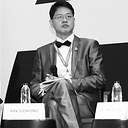Rising Hubs and Structural Inequality: A Historical and Modern Perspective on Thailand and Singapore
The development of intellectual and economic centers has shaped civilizations throughout history, creating parallels between ancient kingdoms and modern global cities. The historical relationship between Lavo and Ayutthaya in Siamese history reflects dynamics of cultural and political dominance that resonate with the contemporary interactions between Singapore and Thailand. While Singapore exemplifies a centralized growth model, Thailand’s distributed development creates both opportunities and challenges, particularly in addressing long-term regional inequalities. By examining these parallels, we can better understand Thailand’s trajectory and the strategies it might adopt to foster balanced and inclusive growth.
In the early medieval period, Lavo (modern-day Lopburi) flourished as a center of learning, culture, and administration under the Khmer Empire. Much like Taxila in South Asia, Lavo became a crossroads of knowledge, transmitting Indianized systems of governance, art, and religion to the surrounding Tai states. Its strategic location along trade routes allowed it to leverage resources and knowledge to exert influence far beyond its size. However, as larger Tai states like Ayutthaya consolidated power, Lavo’s influence gradually diminished. While its intellectual and cultural legacy endured, it was absorbed into the political framework of these larger, more resource-rich states.
Ayutthaya emerged as a dominant kingdom in Southeast Asia by uniting various proto-states, including Lavo, into a centralized polity. Unlike Lavo, Ayutthaya had the geographic and demographic scale to sustain long-term dominance. It combined cultural inheritance from Lavo with its own innovations, creating a powerful state that thrived on trade, diplomacy, and military strength. Positioned along the Chao Phraya River, Ayutthaya became a hub of global trade, attracting merchants from China, India, Persia, and Europe. By absorbing Lavo’s intellectual and administrative strengths, Ayutthaya established itself as the cultural and spiritual center of the region. However, this shift also marked the decline of Lavo’s independent influence, as it became subsumed into Ayutthaya’s larger framework.
In the modern era, Singapore mirrors Lavo’s historical role as a small but powerful hub of knowledge, trade, and connectivity. With globally ranked universities like NUS and NTU, advanced infrastructure, and a strategic location, Singapore has positioned itself as the intellectual and economic nexus of Southeast Asia. Much like Lavo, Singapore’s success lies in its ability to combine efficiency and innovation, despite its limited size and natural resources. Its globally competitive institutions, high GDP per capita, and cutting-edge industries make it a model of centralized growth. However, Singapore’s small scale may prove a limitation in sustaining dominance over the long term, much as Lavo’s influence waned when larger powers like Ayutthaya emerged.
Thailand, on the other hand, resembles Ayutthaya in its potential to consolidate regional influence. With a larger population, more extensive territory, and a growing economy, Thailand has the capacity to outpace Singapore in the long run. While its universities, such as Chulalongkorn, lag behind NUS and NTU in global rankings, they possess significant untapped potential. Chulalongkorn’s budget is comparable to NUS, but inefficiencies in management and a lack of global focus have hindered its competitiveness. If Thailand reforms its higher education system, aligns its institutions with global standards, and prioritizes research and innovation, it could rival Singapore’s intellectual dominance in the region.
Thailand’s development model is further complicated by its structural inequality, which arises from its multiple economic centers. Unlike Singapore’s centralized growth, Thailand’s economic activity is distributed across Bangkok and the Eastern Economic Corridor (EEC), Chiang Mai in the north, northeastern cities like Khon Kaen and Udon Thani, and southern hubs such as Phuket and Hat Yai. This diversification creates spatial inequality, as Bangkok and the EEC absorb the majority of economic activity, leaving other regions relatively underdeveloped. For instance, Bangkok drives high-tech, financial, and service industries, while other regions rely on agriculture and tourism, which are less lucrative and more volatile.
The urban-rural divide in Thailand mirrors Japan’s historical disparities between its Kanto and Kansai regions, where Tokyo (Kanto) absorbed the majority of economic activity, leaving rural prefectures to lag behind. Thailand’s northeast and north face similar challenges, as rural areas experience slower economic growth and limited infrastructure compared to Bangkok. While this model enables overall national growth, it inherently perpetuates regional inequalities, making GDP per capita harder to equalize with that of Singapore. Tourism-dependent regions like Phuket and Samui further exacerbate this disparity, as they remain vulnerable to external shocks like global recessions and pandemics.
To address these structural disparities, Thailand must adopt strategies that tackle inequality without sacrificing the advantages of a multi-nodal growth model. Economic wealth transfer programs, such as a negative income tax (NIT), could help redistribute resources from wealthier regions to poorer areas. This would provide direct financial support to underdeveloped regions, stimulating local consumption and economic activity. However, an NIT must be paired with long-term investments in regional infrastructure, education, and workforce development to address the root causes of inequality. For example, expanding the EEC model to secondary cities like Chiang Mai and Khon Kaen could spur industrial growth and attract foreign direct investment (FDI). Improved connectivity between regions would further integrate regional economies, creating more balanced growth.
Thailand’s structural inequalities may never fully disappear, given its geographic diversity and economic complexity. However, this does not mean inequality must remain a disadvantage. If managed effectively, Thailand’s multi-center growth model could emulate Japan’s Kanto-Kansai balance, turning structural disparities into a productive feature of its economy. By fostering dynamic secondary cities, promoting regional specialization, and implementing wealth redistribution mechanisms, Thailand can transform its inequalities into drivers of innovation and resilience.
The relationship between Lavo and Ayutthaya, and Singapore and Thailand, reflects a recurring cycle in history where smaller, advanced hubs leave an indelible mark on the larger powers that follow them. Singapore, like Lavo, is a powerhouse of knowledge and connectivity, but it may find itself overshadowed as Thailand rises, much like Ayutthaya eclipsed Lavo. The challenge for Thailand lies in seizing this moment of transition and channeling its resources effectively to lead Southeast Asia into the next chapter of its history.
